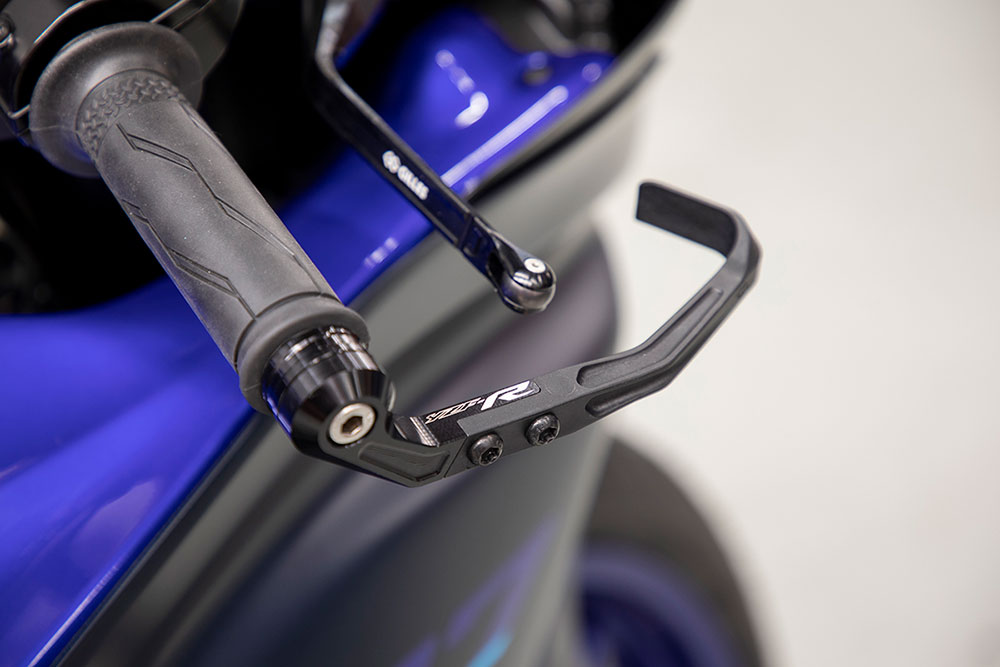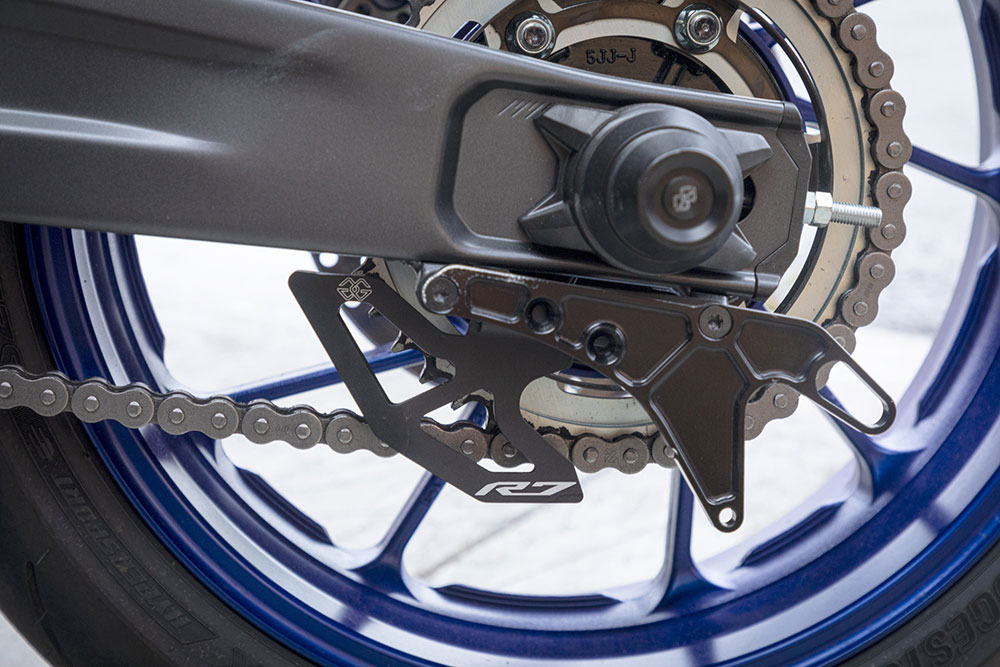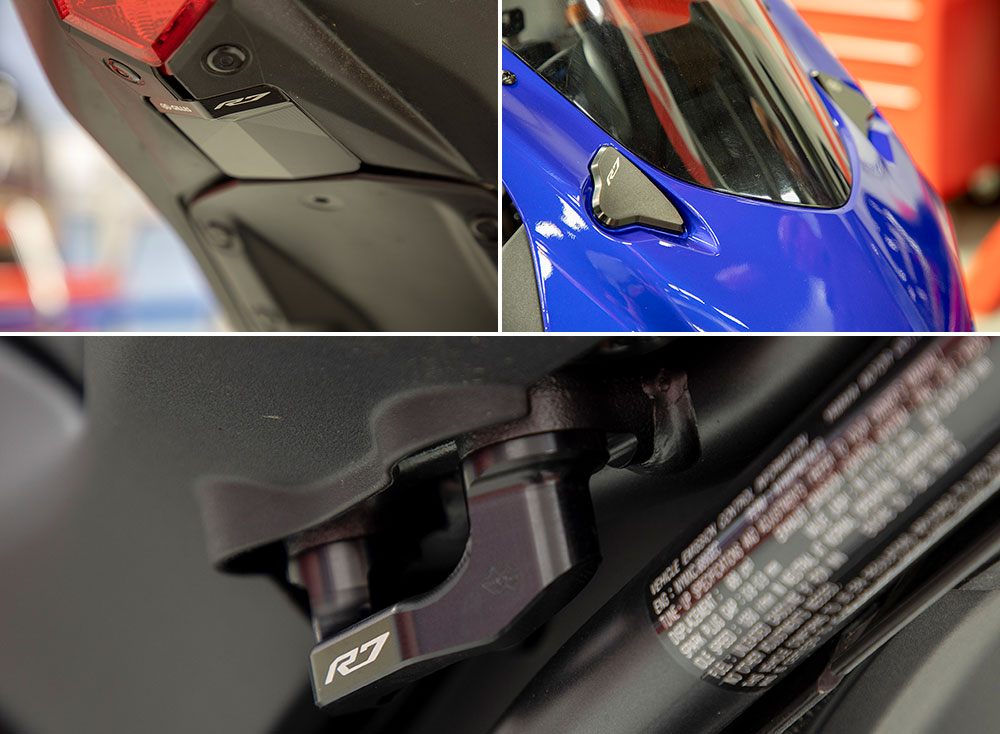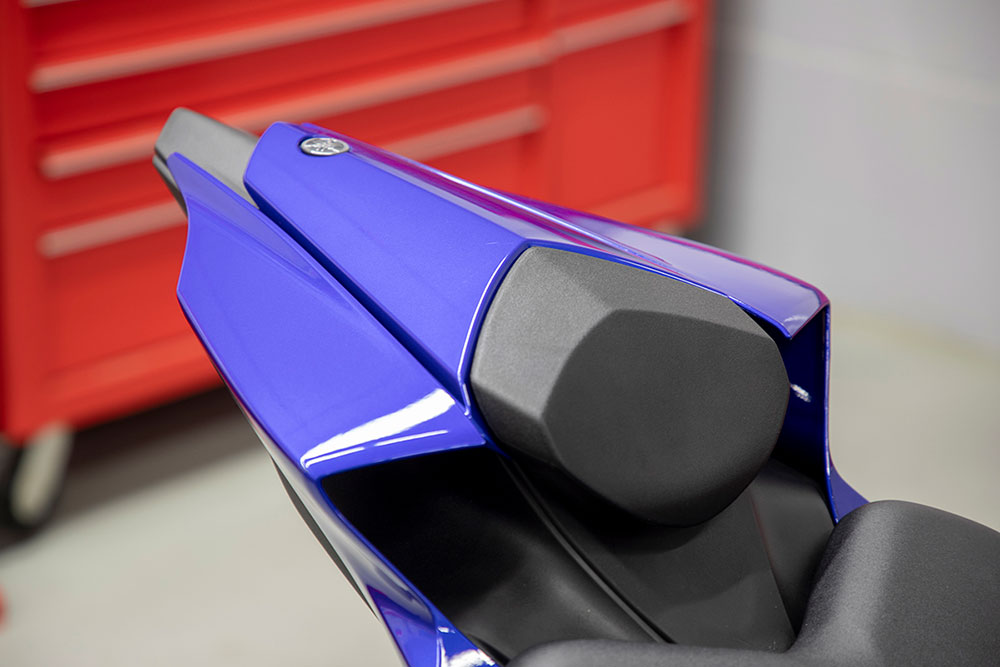By Payam Shafinia
Marketing Coordinator, After Sales
Yamaha Motor Canada
Marketing Coordinator, After Sales
Yamaha Motor Canada
The popularity of track days is on the rise as more street riders recognize they are a great opportunity to hone riding skills and explore their bike’s capabilities in a safer, more controlled environment.
Depending on where you live, there may be many options available when selecting a track day. Always ensure you are familiar with the organizer’s rules and regulations before signing up. Most organizers will list safety gear and bike prep requirements on their website. Be prepared to replace your Glycol based coolant with distilled water and remove your mirrors if necessary. Remember that your bike will be subjected to loads and speeds not commonly found on public roads, so make sure everything is in top shape. Be diligent about going through these details as failing tech inspection may mean you can’t ride.
The organizer’s guidelines are a good starting point in preparing your machine, but here are a few more things you can do to help make your day even safer and more enjoyable.

Frame Sliders
Even off the track, many riders install frame sliders to help provide relatively inexpensive protection for more expensive, fragile components in the event of a minor crash. While frame sliders won’t always protect all your motorcycle’s body work, they can help minimize cosmetic damage and provide a bit of a buffer between the pavement and vital components.
Always ensure the contact material of the frame slider is made from plastics such as Drelin. The plastic frame sliders glide across the pavement much better than metal sliders and help absorb some of the initial impact. Metal sliders tend to transfer most of the impact straight to the frame.
Also, choose a shorter frame slider if the option exists. A longer frame slider may suggest greater protection, but the additional length can often cause the slider to bend back or catch on a curb, causing the bike to flip or damaging the mounting points during a crash.

Lever guards, like the GYTR unit, mount inside the OEM handlebar tube and do not take up any valuable space on the bar itself.
Front brake lever guard
Minor brake lever contact between two motorcycles has become a common cause of on-track incidents. A light touch from another rider’s elbow or tail section on your brake lever can immediately lock up the front wheel. All racing organizations have gone as far as to mandate brake lever guards to help protect against this. Brake lever guards are available in several different mounting styles so make sure that you select a guard that fits your application.

The GYTR toe guard bolts to an existing mounting location, eliminating the need to drill your swingarm.
Rear Sprocket/Toe Guard
Tech inspectors at racetracks will always emphasize the importance of keeping your bike free of any sharp objects, hence the rounded ends on brake and clutch levers. The rear sprocket can pose a possible threat should your toes or fingers make contact. A rear toe guard is a great way to ensure you don’t get caught up between the chain and sprocket in the event of a crash. Most toe guards require drilling and/or tapping of the swingarm, which may make a DIYer a little uneasy. Some units, like on the R7, are a simple bolt-on application. Similar to brake lever guards, most racing organizations mandate the use of a toe guard.

Left: Clutch Cover. Right: Alternator Cover
Engine Case Covers
In the pursuit of podiums, manufacturers are trimming weight anywhere possible from super sport models. Unfortunately, this has left engine covers on the modern sport bike rather thin when compared to the 500-pound behemoths from 30 or 40 years ago. Even a minor tip over in your driveway can crack the ignition or clutch cover, turning your ride into an expensive drive to the dealer.
A quality engine cover not only helps protect your OEM covers from abrasion if the bike slides on pavement, but also helps spread the load of the impact should the bike simply fall off the side stand. So this simple bolt-on addition may not only save you money in the long run, but also help avoid a minor tip over ending your track day or Sunday ride. Engine covers are also recommended by most racetracks as they help keep engine oil off the track surface in the event of a crash.

GYTR Radiator Guard
Radiator Guard
By nature of its functionality, a motorcycle radiator must remain somewhat fragile in design. Aluminum is usually the material of choice, as it combines light weight and the ideal heat shedding abilities needed for the job. Unfortunately, its need for a supply of cool air also gives the radiator a front row seat to every piece of debris thrown up by other vehicles – and even your own front tire. The smooth surface of a racetrack does not offer any relief, as the tiny pieces of gravel and tire debris are usually flung in your direction at much higher speeds. A simple radiator guard is a great addition to any bike, on road or track. They are usually quite light, low profile, easy to install and don’t impede air flow in any way.

GYTR Quick Shifter
Quick Shifter
A quick shifter is a very nice addition to any bike subjected to spirited rides on a regular basis. It allows you to execute clutch-less upshifts at full throttle by temporarily cutting the ignition, thereby taking the load off the gear box and allowing the next gear to engage smoothly and safely with no additional stress on the mechanical components.
In the past, quick shifters were an expensive upgrade only available through the aftermarket. This typically meant installing an aftermarket “piggyback” fueling unit along with the quick shift sensor itself. In some cases, owners even had to install a second piggyback unit just to cut the ignition.
The popularity of electronic rider aids means more and more manufacturers are putting quick shifters on their flagship models, with a trickle-down effect to their middle-weight and even small-displacement models. While the manufacturer may forego the addition of a quick shifter on some models as a cost-saving measure, the unit may still have the functionality in place to accept an OE accessory quick shifter similar to their more expensive models. These OEM quick shift kits are usually a simple bolt on and come with all the model-specific shift rods and OE connectors, ensuring a perfect fit straight out of the box, usually at a very reasonable price.
In most cases, the instrument panel is already enabled to display the quick shift functions once it senses the unit on the bike. Quick shifters help take some of the effort out of shifting gears, allowing the rider to focus more on their riding. Always ensure you follow the manufacturer’s instructions when installing a quick shift kit. Improper securing of the shift rod and sensor can cause any shift linkage to malfunction.

Yamaha Billet Racing Cover Kit
Track Kits
Before you head out to the track, you may choose or be required to remove certain items from your motorcycle.
Most track day organizers require the removal of mirrors. Unfortunately, the mirrors typically double as a fairing mount so removing them can leave your upper fairing unsecured.
Many super sports now come with easily removable rear fenders, allowing owners to remove the rear fender, licence plate and turn signals in a matter of minutes. In some cases, removing the rear fender can leave the undertail components either loose or vulnerable.
While they do make for a convenient tie-down point, it is also strongly recommended to remove passenger pegs and brackets before heading to the track. In the event of a crash, the protruding passenger pegs can act as a leverage point and either bend or break the subframe.
The installation of a track kit can address the omission of these commonly removed street-oriented items. Mirror block-off plates can cover the mirror’s mounting locations while securing the fairing. Rear fender cover plates can cover the void left by the rear fender while securing the remaining body work. Passenger peg covers can provide a sturdy mounting point for tie-down straps while staying safely tucked out of the way.

Left: Rear Axle Slider. Right: Front Axle Slider
Axle Protectors
In some crashes, the front and rear axle can contact the pavement or get packed with dirt and debris as the bike slides off the racing surface. This can damage the ends of the axles, fork base or swingarm, making wheel removal very difficult. Axle protectors can help avoid such damage and can easily be removed when it’s time for a tire change.
A Few Added Touches
While preparing the Yamaha R7 for the track, we took the liberty of installing a few items to enhance the styling of the bike.

Left: Brake lever. Right: The addition of adjustability to the clutch lever ensures a perfect fit for all riders.
Adjustable clutch and brake levers add a personal touch while allowing fully customizable ergonomics. Full-length levers offer better fit and leverage over the short-style levers. Ensure that you don’t forget the necessary bushings when installing new levers.

The Yamaha Accessory Sport Screen has the necessary safety ratings to maintain OEM safety standards in the event of an impact.
Tinted screens can complement the styling of the machine very nicely. When selecting a different screen, keep in mind that your OEM windscreen is designed to withstand heavy impact without breaking and leaving a sharp edge. Most aftermarket acrylic screens do not pass the regional safety standards and typically break upon impact, leaving a dangerously sharp edge. Factory accessory screens, like Yamaha’s Sport Screen, enhance the styling of the machine while retaining the safety certification required by most countries.

Rear Seat Cowl
A colour-matched solo seat cover can add that final touch to make your street bike look and feel track ready. The seat cover not only mimics the look of a race bike’s solo seat, but it also gives you an edge to slide back against while tucking in on those long straights.
Track days are an exciting way to hone your skills on your machine. Ensure you are familiar with the organizer’s rules and regulations and, remember, there’s no such thing as being over prepared.


 All Yamaha News
All Yamaha News